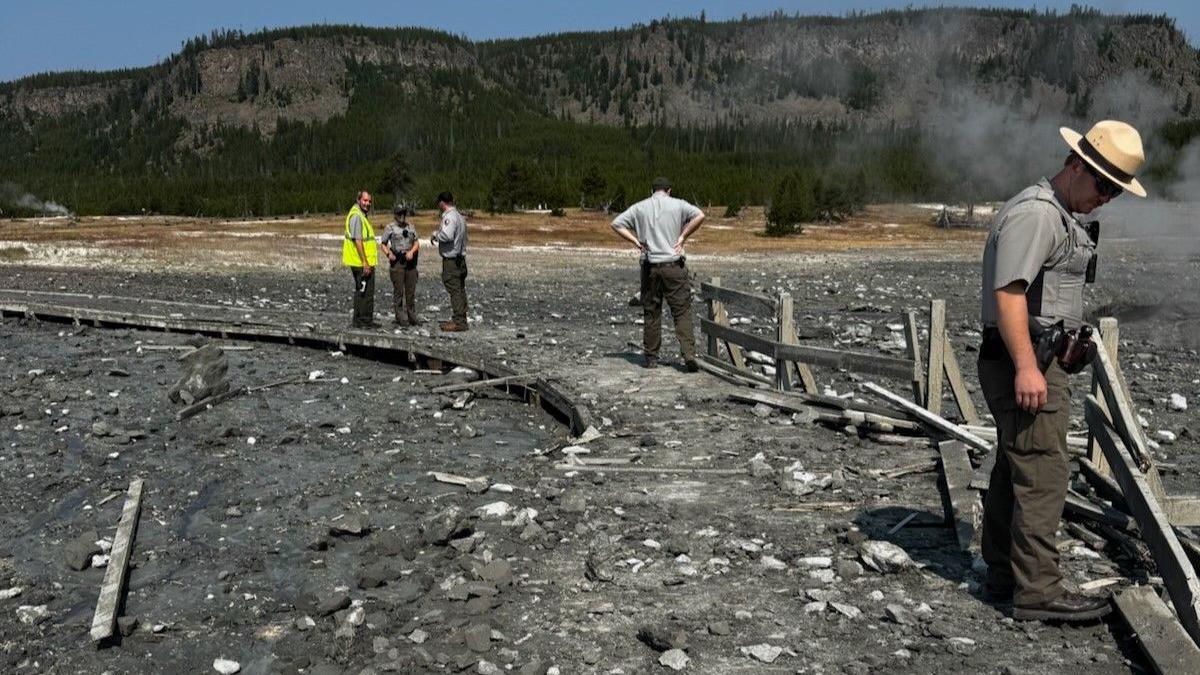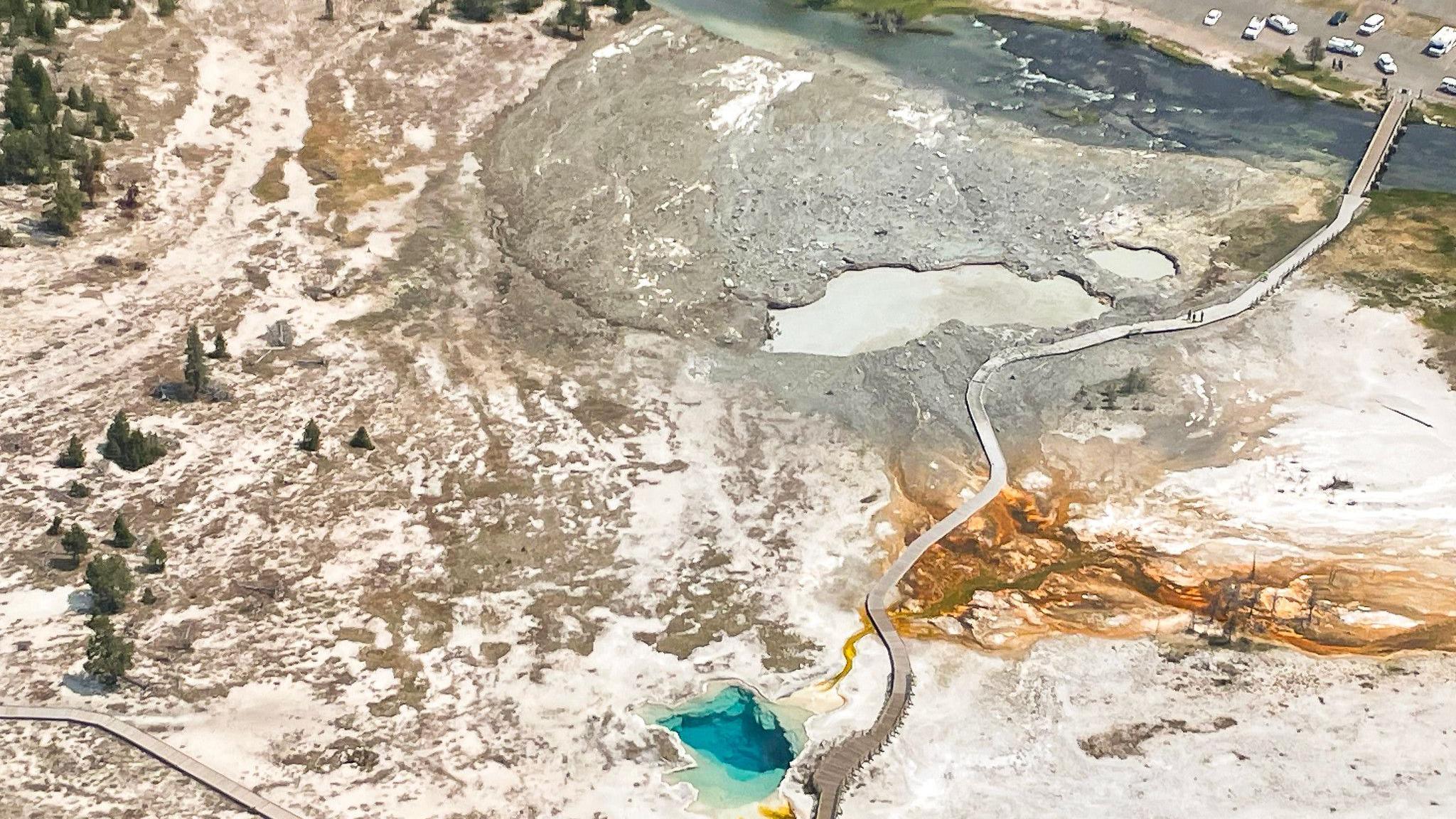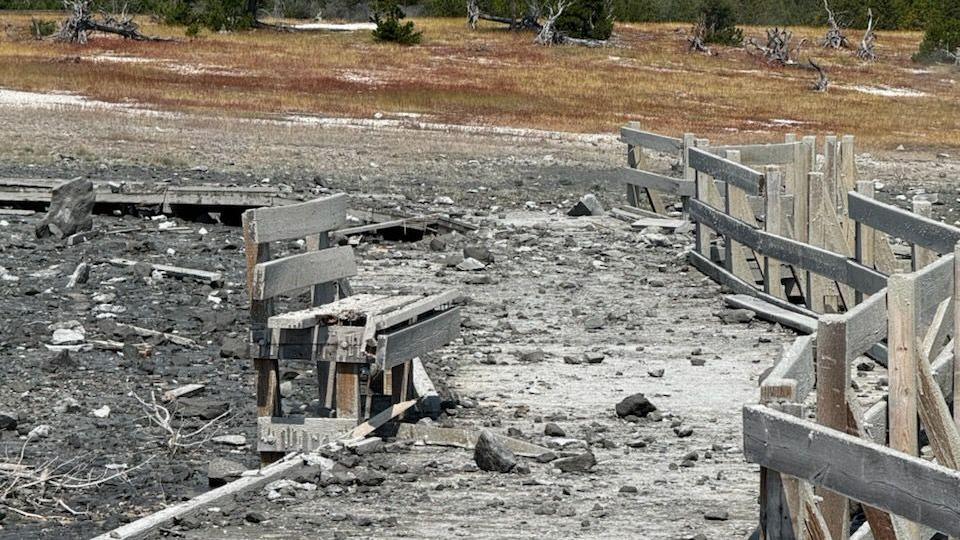Yellowstone blast sends visitors fleeing for cover

NPS officials view debris from hydrothermal explosion
- Published
Visitors were forced to flee as a huge hydrothermal explosion shot steam and debris into the air at Yellowstone National Park
Videos show dozens of people running as a large column of grey mud shoots from the ground, sending rocks and boiling water high into the air around Biscuit Basin.
The National Parks Service reported no injuries but said the nearby boardwalk and benches were damaged in the blast on Tuesday.
The service closed the area, a few miles from the Old Faithful geyser.
A US Geological Survey photograph shows a huge grey area of debris thrown out by the eruption.

The survey said that a hydrothermal explosion is caused by water flashing to steam in a shallow hydrothermal system.
Surrounding rocks are blown apart as the steam expands. The often violent events result in the "rapid ejection of boiling water, steam, mud, and rock fragments".
They can reach heights of 1.2 miles (2km) and leave huge craters. Most of the ejected material is called breccia - angular rocks cemented by clay.
The survey said hydrothermal explosions can pose significant local hazards and damage or destroy thermal features.
In Yellowstone, the explosions are not related to volcanic activity.
Similar eruptions occurred in Biscuit Basin in 2009, 1991 and after an earthquake in 1959.

Debris peppers the boardwalk